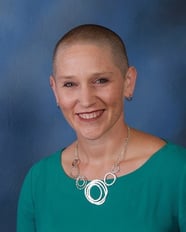
A recent Pubmed search for the keyword “burnout” retrieved 14,244 results. However, a search for “burnout and prosthetist” or “burnout and orthotist,” fetched 0 results. Clearly we need more research on the effects of burnout on the prosthetic and orthotic clinician. For now, let’s uncover what we know about burnout and how O&P professionals can work to prevent it.
What is Burnout?
Most have heard the term, but few know its origins. Burnout was first described by German-American psychologist, Herbert Freudenberger, in 1984 as “depletion or exhaustion of a person’s mental and physical resources attributed to his or her prolonged, yet unsuccessful striving toward unrealistic expectations, internally or externally derived.”
Key Stats:
In the US, 42% of physicians report burnout and many also report depression14.
Mid-career physicians aged 45-54 years are more at risk of burnout than younger or older colleagues14.
Annual productivity loss attributable to burnout may be equivalent to losing the graduating classes of seven medical schools7.
Burnout can have very real, wide-ranging consequences. The effects of burnout can feel so gradual that many clinicians are unaware it is happening.
Symptoms of Burnout:
According to a survey conducted by the Colorado Physician Health Program, symptoms can present in the following ways5:
- Feelings of excessive physical, emotional, intellectual, and spiritual exhaustion
- fluctuations in mood, increased comments about stress/burnout, and behavioral changes
- Losing enthusiasm for work, feeling work is no longer meaningful
- Treating people/patients as if they were objects (depersonalization)
- Physical illness: hypertension, ulcers, sleeplessness, headaches, GI upset, frequent colds, musculoskeletal aches/pains
- Depression or anger
- Excessive drinking, smoking, or drug abuse
- Loss of ability to enjoy friends, family, or leisure time
- Lateral violence (bullying)
How Can We Prevent Burnout?
It’s important to keep in focus one’s own need for balanced wellness: spiritual, physical, emotional, and social.
Psychotherapist Julika Zwack (2013) performed interviews with 200 physicians from Germany who exhibited low levels of burnout. The following includes protective factors they found against burnout:
- Develop Job-related Sources of Gratification
For clinicians who have accumulated many years of experience in the field, falling into autopilot, where you feel detached from reality, is common. Zwack’s research found that a powerful tactic for avoiding burnout is to disrupt this autopilot by celebrating meaningful professional activity. Focusing on relationships with patients and identifying with the people you have helped is an essential habit for developing positive attitudes to stave off burnout. In addition, the cultivation of relationships with colleagues can improve professional insecurity by enhancing knowledge and expertise (such as attending the Association of Children’s Prosthetic and Orthotic Clinic annual conference!).
- Useful Attitudes
While directing your attention outward to positive accomplishments is important, directing your attention inwards to attitudes of acceptance, appreciation, and realism is just as valuable. Taking time for self-awareness and reflection allows you to think pragmatically about your role as a clinician. Are your attitudes being shaped by wishful thinking and undermining your ability to appreciate the good things? Alternatively, is a change necessary for personal growth? Taking time for introspection can help reframe your attitude and look at circumstances in a new way.
- Resilience Practices
Work takes up a lot of our time and energy, so it’s natural for job-related stress to spill into our personal lives. Establishing boundaries is key. Strategies include cultivating contact with family and friends, scheduling—yes, scheduling—time for leisure activities, and limiting work hours. Self-demarcation of professional and personal life can take a little effort and practice, but cultivating balance is a healthy habit to develop resilience during hard times.
The Importance of Mindfulness
Jon Kabat-Zinn, professor emeritus of medicine and creator of the Stress Reduction Clinic, defines mindfulness as “paying attention on purpose, in the present moment, and nonjudgmentally, to the unfolding of experience moment to moment.” The goal of mindfulness is to empower individuals to respond to situations consciously rather than automatically. Mindfulness meditation is an effective strategy for preventing and managing workplace stress and burnout15. Mindfulness interventions can effectively reduce stress, improve quality of life, and increase self-compassion in healthcare professionals4, 9, 13. There are many ways to cultivate mindfulness, including meditation, breathing exercises, yoga, walking, and more.
It Can Even Change Your Genes!
In an 8-week Harvard study, 24 participants with stage one hypertension were asked to clear their mind for 15 minutes daily. Participants had improvement in blood pressure, as well as change in expression of 172 genes that regulate inflammation, glucose metabolism, cardiovascular system, and circadian rhythm3.
Final Thoughts
The effects of burnout can accumulate gradually, which is why it’s important to be aware of the warning signs. Most importantly, understand that you’re not alone and that other clinicians have experienced—or are currently experiencing—the same feelings of stress and fatigue. Remember:
- Reflect on what you want in your life
- Put yourself first (say “yes” to things you enjoy)
- Schedule your personal commitments and follow through
- Learn to say “no” to things that don’t move you
- Practice mindfulness
- If you see a colleague struggling, say something
 Contributor
Contributor
Dr. Phoebe Scott-Wyard is a rehabilitation medicine specialist at Rady Children's Hospital-San Diego and an assistant professor at UC San Diego School of Medicine. She is double board-certified in Pediatrics and Physical Medicine & Rehabilitation. Dr. Scott-Wyard is passionate about treating children and adults with limb differences. Before coming to Rady Children's, she served as the medical director of the Child Amputee Prosthetics Project clinic at Shriners Hospital in Los Angeles for six years. She is also a board member at large for the Association of Children's Prosthetic and Orthotic Clinics (ACPOC), the only professional organization for pediatric amputee care. https://www.rchsd.org/doctors/phoebe-scott-wyard-do/
This article is an excerpt of a lecture given at the ACPOC annual conference in 2018.
Click here to download references.

